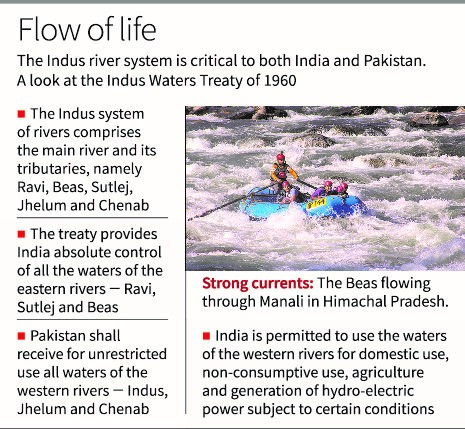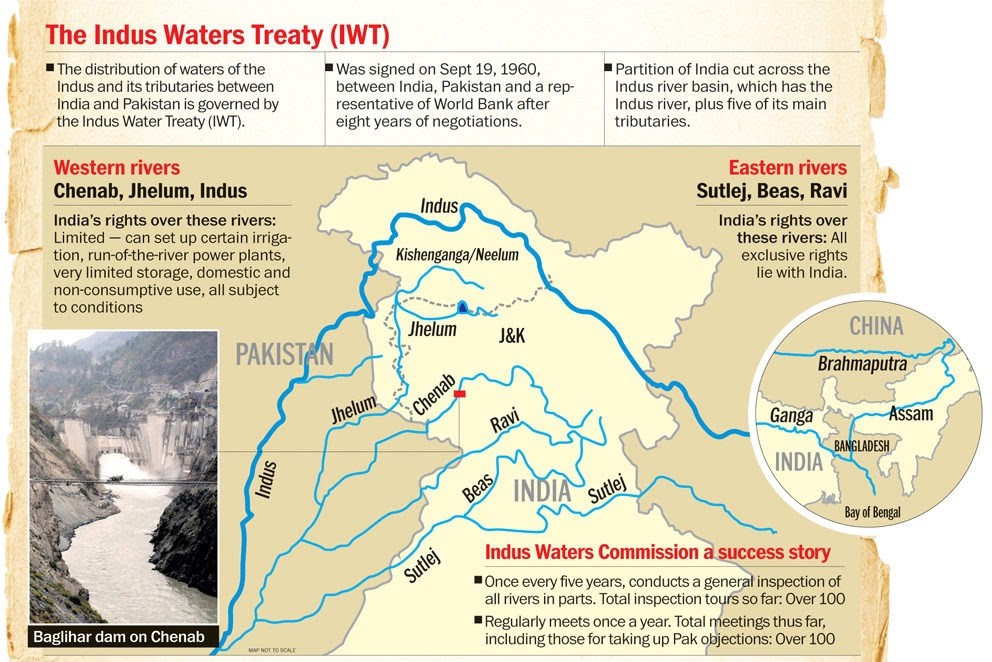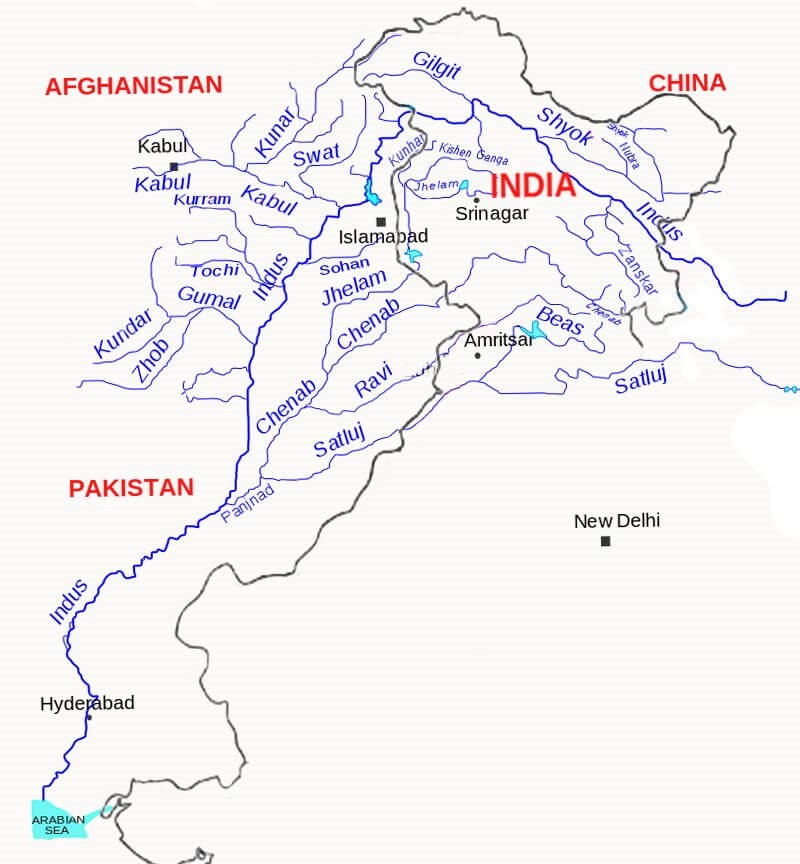Free Courses Sale ends Soon, Get It Now


Free Courses Sale ends Soon, Get It Now



Disclaimer: Copyright infringement not intended.
Context: India announced that it wants to modify the 62-year-old Indus Waters Treaty (IWT) with Pakistan, citing what it called Pakistan’s “intransigence” in resolving disputes over the Kishenganga and Ratle hydropower projects, both in Jammu and Kashmir.
Details:

Copyright infringement is not intended
About the treaty:

Copyright infringement is not intended
The Indus is one of the most important drainage systems of the subcontinent of India. It has a length of 2880 Km, of which 709Km lies in India. The State-wise distribution of the drainage area is given below:
Sr.No State Drainage area (sq.km)
Total 321,289
Jhelum River Basin:
Chenab River Basin:
Ravi River:
Satluj River:
https://epaper.thehindu.com/Home/ArticleView
© 2024 iasgyan. All right reserved